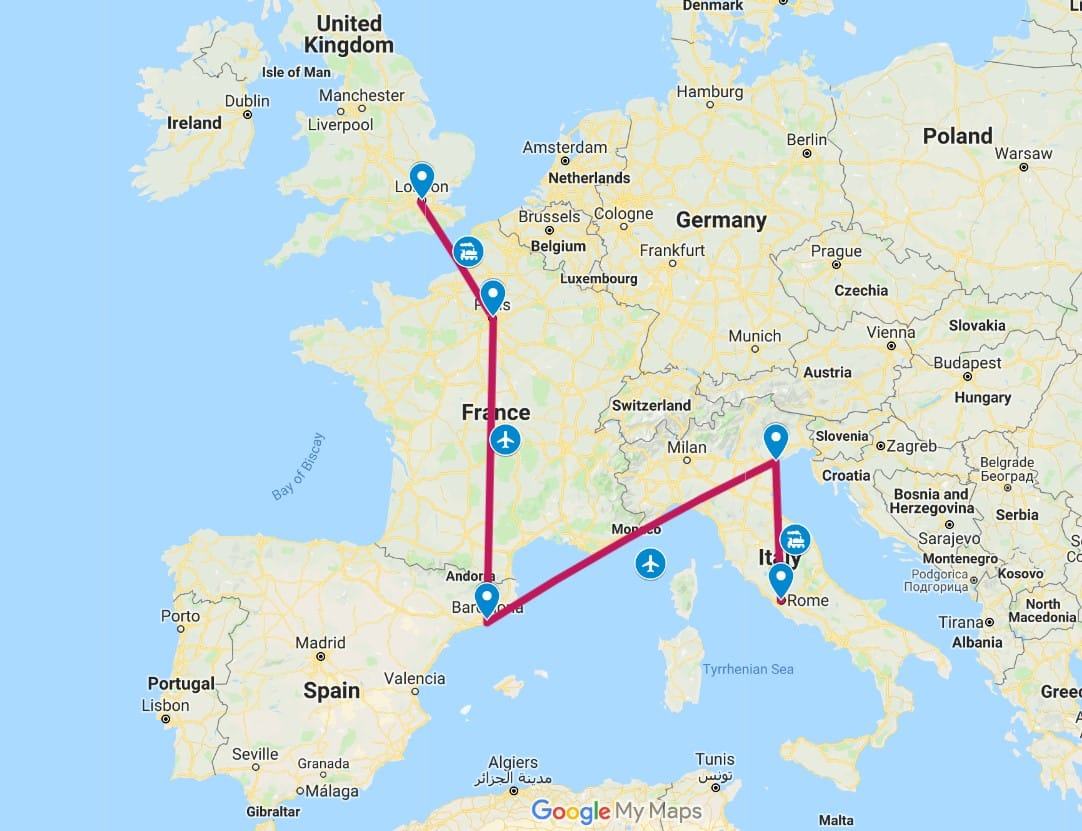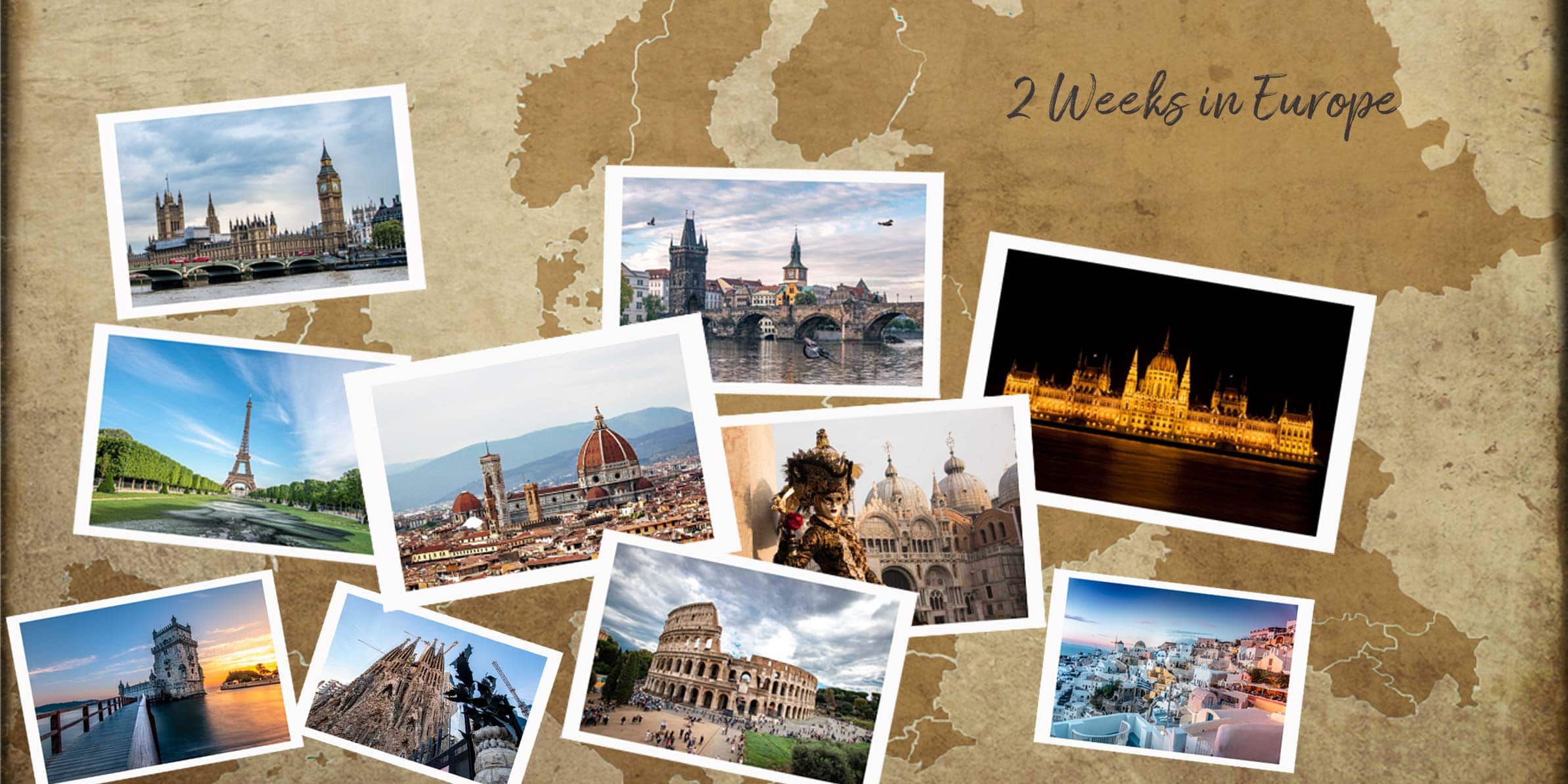Two Week Trip to Europe, Your Ultimate Guide
Two Week Trip to Europe: Dreaming of cobblestone streets, ancient castles, and delicious cuisine? This guide dives into everything you need to know to plan an unforgettable two-week European adventure. Whether you’re a budget backpacker, a luxury traveler, or an adventurous explorer, we’ll help you craft the perfect itinerary, covering everything from visa requirements and budgeting to choosing the perfect destinations and packing your bags.
We’ll explore diverse European regions, highlighting both iconic landmarks and hidden gems, offering sample itineraries and practical tips for navigating transportation, accommodation, and cultural nuances. Get ready to discover the magic of Europe, one unforgettable experience at a time.
Planning Your Two-Week European Adventure
Embarking on a two-week European adventure requires meticulous planning to ensure a smooth and memorable trip. This section details the essential steps, from securing necessary travel documents to budgeting effectively and choosing your destinations.
Careful preparation is key to maximizing your time and enjoyment. Consider these crucial elements before you even book your flights.
Visa Requirements and Travel Insurance
Before anything else, check the visa requirements for each country you plan to visit. European Union citizens generally enjoy freedom of movement within the Schengen Area, but citizens of other countries may need a Schengen visa. The application process can take time, so start early. Equally important is comprehensive travel insurance. This should cover medical emergencies, lost luggage, trip cancellations, and other unforeseen circumstances.
Compare policies from different providers to find the best coverage at a reasonable price. Remember to carefully read the policy details before purchasing.
Budgeting for Your Trip
Budgeting is crucial for a successful trip. Factor in flights, accommodation, transportation within Europe, activities, food, and souvenirs. A realistic budget allows for flexibility and prevents financial stress during your travels. Consider using budgeting apps or spreadsheets to track your expenses. Remember to account for unexpected costs, such as emergency medical expenses or last-minute changes to your itinerary.
Research average costs for accommodation, food, and activities in your chosen destinations to create a more accurate budget.
Choosing Your Destinations
Europe offers a wealth of diverse destinations, catering to various interests and travel styles. Consider your priorities—history, art, nature, nightlife, food—when making your selection. Do you prefer bustling cities or tranquil countryside? Fast-paced sightseeing or a more relaxed pace? These considerations will help you narrow down your options and create a truly personalized itinerary.
Transportation Options in Europe
Europe boasts an extensive and well-connected transportation network. Options include budget airlines (for shorter distances), high-speed trains (comfortable and efficient for longer distances), buses (budget-friendly option, but often slower), and rental cars (provide flexibility but can be expensive, especially with parking fees and tolls). Each option has its own advantages and disadvantages in terms of cost, speed, and comfort.
Factor in travel time between destinations when planning your itinerary. Consider purchasing a rail pass if you plan on extensive train travel.
Choosing Your European Destinations
This section presents three distinct two-week itineraries, catering to different travel styles: budget, luxury, and adventure. It also highlights the cultural differences across three major European regions.
Three Sample Two-Week Itineraries
These itineraries provide a framework. Feel free to adjust them based on your interests and budget.
- Budget Itinerary: Focuses on affordable accommodation (hostels, budget hotels), public transportation, and free activities (walking tours, parks). Example: Budapest, Prague, Krakow.
- Luxury Itinerary: Prioritizes high-end accommodation (boutique hotels, five-star hotels), fine dining, private transportation, and exclusive experiences. Example: Paris, Rome, Santorini.
- Adventure Itinerary: Emphasizes outdoor activities (hiking, biking, kayaking), exploring less-traveled areas, and staying in eco-friendly accommodations. Example: Swiss Alps, Cinque Terre, Scottish Highlands.
Cultural Highlights of Three European Regions, Two week trip to europe
Each region offers unique cultural experiences.
- Western Europe (France, UK, Germany): Rich history, iconic landmarks, diverse art scenes, and sophisticated culture.
- Southern Europe (Italy, Spain, Greece): Warm climate, beautiful beaches, ancient ruins, vibrant nightlife, and delicious Mediterranean cuisine.
- Eastern Europe (Czech Republic, Poland, Hungary): Unique architecture, rich history influenced by various empires, affordable prices, and a less-touristy atmosphere.
Lesser-Known European Gems
Venture beyond the typical tourist hotspots for unique experiences.
- Porto, Portugal: Charming city with historic architecture, port wine cellars, and delicious seafood.
- Seville, Spain: Vibrant city with stunning architecture, flamenco dancing, and delicious tapas.
- Ljubljana, Slovenia: Picturesque capital city with a charming old town, a stunning castle, and a relaxed atmosphere.
Accommodation and Activities

This section explores various accommodation options and suggests must-do activities based on different interests. A sample daily itinerary for a specific city is also provided.
Accommodation Options
The range of accommodation in Europe caters to all budgets and preferences.
- Hostels: Budget-friendly, social atmosphere, ideal for solo travelers or backpackers.
- Budget Hotels: Affordable, clean, and comfortable, offering basic amenities.
- Mid-Range Hotels: More amenities, better location, suitable for couples or families.
- Luxury Hotels: High-end amenities, exceptional service, perfect for a luxurious getaway.
Must-Do Activities
Categorized by interest for easier planning.
- History: Colosseum (Rome), Eiffel Tower (Paris), Acropolis (Athens).
- Art: Louvre Museum (Paris), Uffizi Gallery (Florence), Van Gogh Museum (Amsterdam).
- Food: Tapas tour in Spain, pasta-making class in Italy, trying local street food.
- Nature: Hiking in the Swiss Alps, exploring the Scottish Highlands, visiting national parks.
Sample Daily Itinerary: Rome, Italy
A possible schedule for a day of sightseeing in Rome.
- Morning: Colosseum and Roman Forum (3 hours)
- Lunch: Traditional Roman pizza near the Forum (1 hour)
- Afternoon: Pantheon and Trevi Fountain (2 hours)
- Evening: Dinner in Trastevere, followed by gelato (2 hours)
Food and Culture
This section delves into the culinary highlights and cultural nuances of several European countries, emphasizing respectful travel practices.
Culinary Highlights
Each country offers unique culinary experiences.
- Italy: Pasta, pizza, gelato, regional specialties like risotto and tiramisu.
- Spain: Paella, tapas, gazpacho, churros con chocolate.
- France: Croissants, baguettes, macarons, cheese, wine.
Cultural Etiquette and Customs
Understanding local customs ensures a respectful and enjoyable trip.
- Italy: Learn basic Italian phrases, avoid loud conversations in public, and be punctual for appointments.
- Spain: Enjoy leisurely meals, avoid excessive PDA, and be aware of siesta times.
- France: Dress smartly when visiting formal establishments, avoid being overly familiar with strangers, and be polite and respectful.
Impact of Local Traditions
Local traditions significantly enrich the travel experience. Immerse yourself in local markets, attend festivals, and try local foods to gain a deeper understanding of the culture.
Budgeting and Finances
This section provides a cost breakdown for a two-week European trip and offers strategies for managing your budget effectively.
Planning a trip? Thinking about a crazy Vegas adventure? Check out this guide on making a Vegas trip movie – it’s packed with tips for capturing those unforgettable moments. Afterwards, if you’re looking for something a bit more relaxed, consider a European getaway. A quick and easy option is a Vienna to Bratislava day trip ; it’s a fantastic way to experience two beautiful cities in one go! You can easily fit it into a longer European vacation, or even make it a standalone weekend trip.
Cost Breakdown
A sample budget, remember this is just an estimate and can vary significantly depending on your travel style and choices.
- Flights: $800 – $1500 (round trip)
- Accommodation: $700 – $2100 (14 nights)
- Activities: $500 – $1000
- Food: $700 – $1400
- Transportation: $300 – $700
Total Estimated Cost: $3000 – $6700
Budget Management Strategies
Tips for saving money while traveling.
- Travel during the shoulder season (spring or fall) for lower prices.
- Utilize budget airlines and public transportation.
- Take advantage of free activities, like walking tours and visiting parks.
- Eat at local restaurants and markets instead of tourist traps.
- Use a travel rewards credit card to earn points and miles.
Affordable Travel Insurance
Compare policies from different providers to find the best coverage at a reasonable price. Look for policies that cover medical emergencies, lost luggage, and trip cancellations.
Planning a trip? Thinking of something flashy? Check out this guide on Vegas trip movie for some inspiration – it might just give you that extra push to book those flights! Alternatively, if you prefer a more cultured getaway, a Vienna to Bratislava day trip offers a charming blend of history and architecture, perfect for a shorter break.
Both offer completely different vibes, so it really depends on what kind of adventure you’re craving.
Packing Essentials: Two Week Trip To Europe
This section provides a comprehensive packing list, considering varying weather conditions and activities.
Packing List

A suggested packing list, adjust based on your itinerary and personal needs.
- Clothing: Versatile clothing items suitable for various weather conditions, comfortable walking shoes.
- Toiletries: Travel-sized toiletries, medications, sunscreen, insect repellent.
- Documents: Passport, visa (if required), travel insurance information, flight/train tickets.
- Electronics: Phone, charger, adapter (if necessary), camera.
- Other essentials: Reusable water bottle, small backpack, universal adapter, first-aid kit.
Appropriate Clothing Choices
Clothing should be appropriate for the climate and cultural context of your destinations. Research the local customs and dress accordingly.
Personal Hygiene and Health
Pack travel-sized toiletries and any necessary medications. Consider bringing a first-aid kit with essentials like bandages, antiseptic wipes, and pain relievers.
Post-Trip Reflections
This section offers tips for documenting and preserving your travel memories and highlights the long-term benefits of travel.
Documenting Your Trip
Preserve your memories by keeping a travel journal, taking lots of photos and videos, and collecting souvenirs.
Sharing Your Experiences
Share your adventures with friends and family through photo albums, travel blogs, or social media.
Long-Term Benefits of Travel
Travel broadens perspectives, fosters personal growth, and creates lasting memories.
Planning a two-week trip to Europe can seem daunting, but with careful planning and a touch of adventure, it can be the trip of a lifetime. Remember to prioritize your interests, research your destinations thoroughly, and embrace the unexpected. From the bustling streets of Rome to the serene landscapes of the Swiss Alps, Europe offers a wealth of experiences waiting to be discovered.
So, pack your bags, book your flights, and prepare for an unforgettable journey across the continent. Safe travels!
Share this content:


